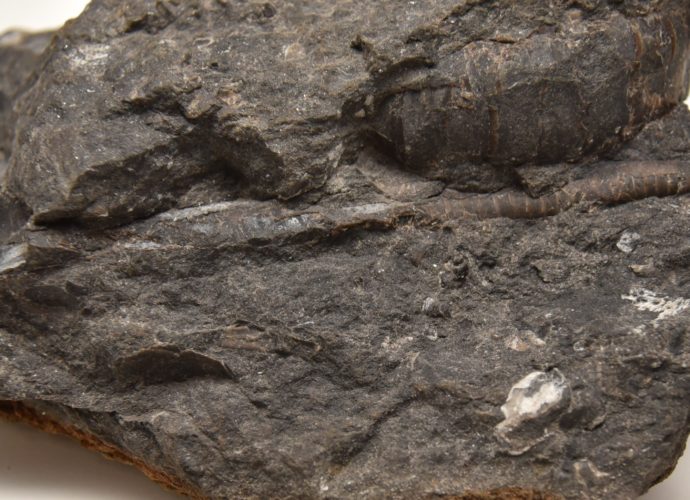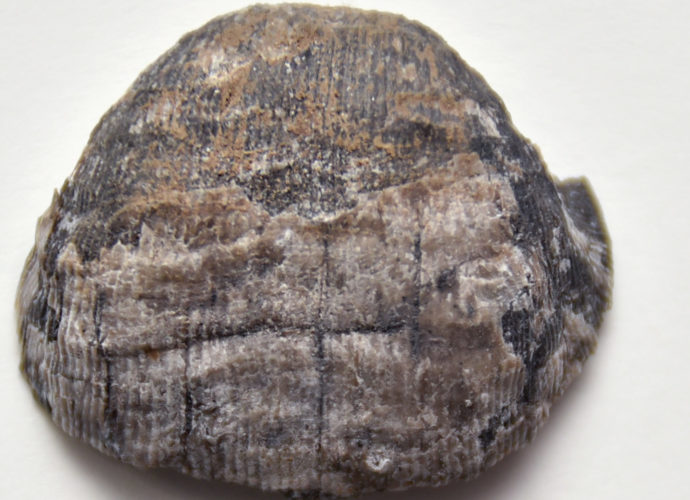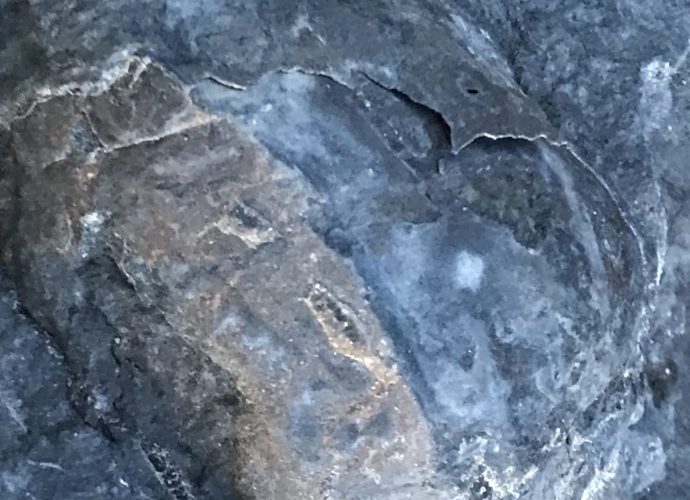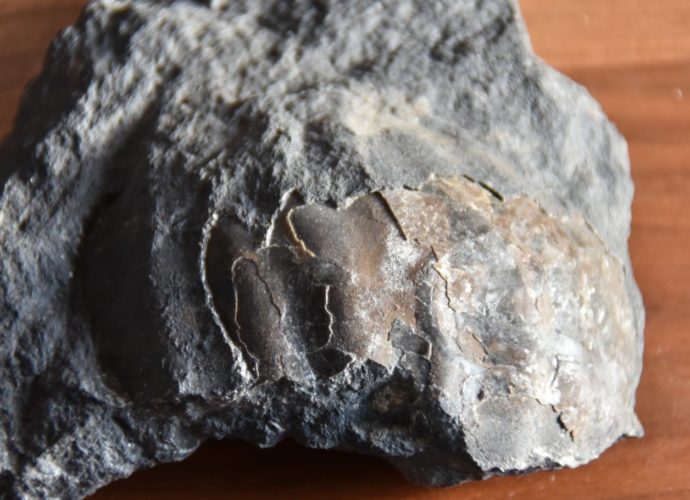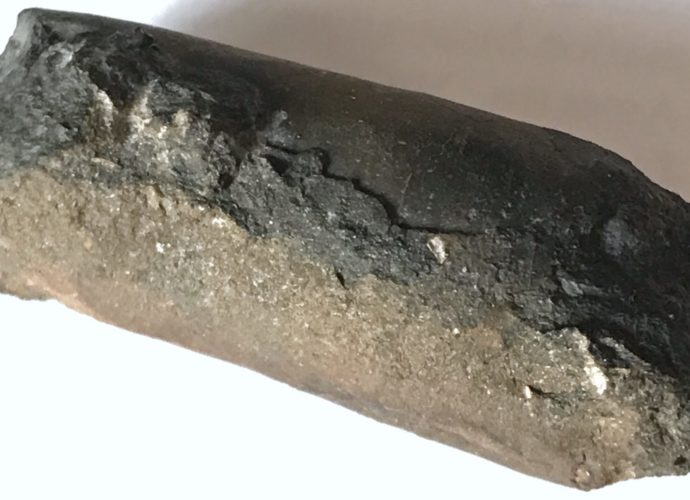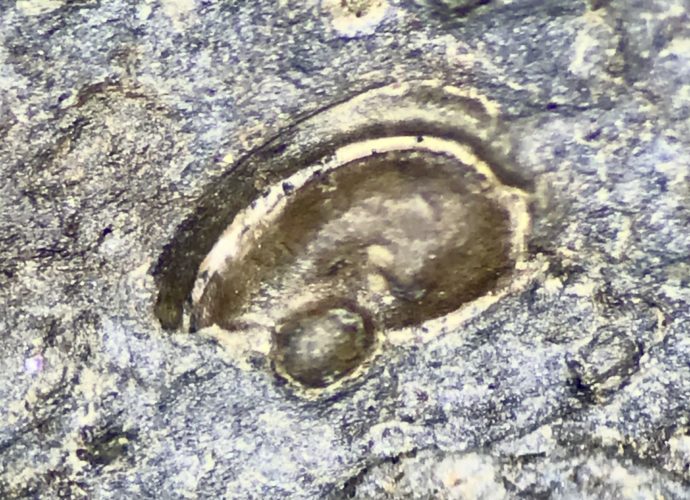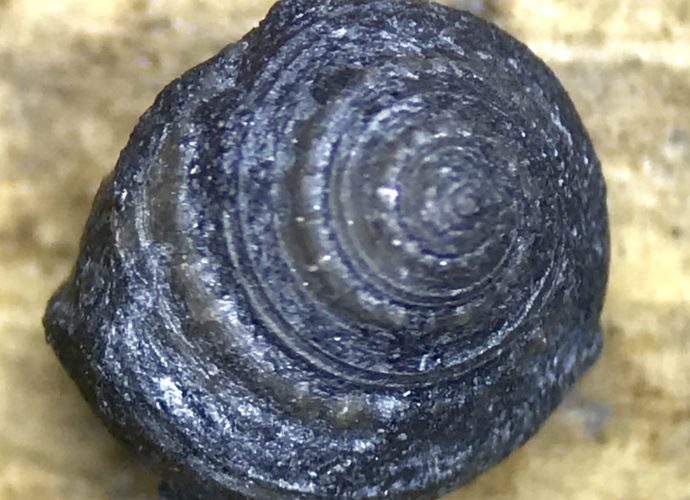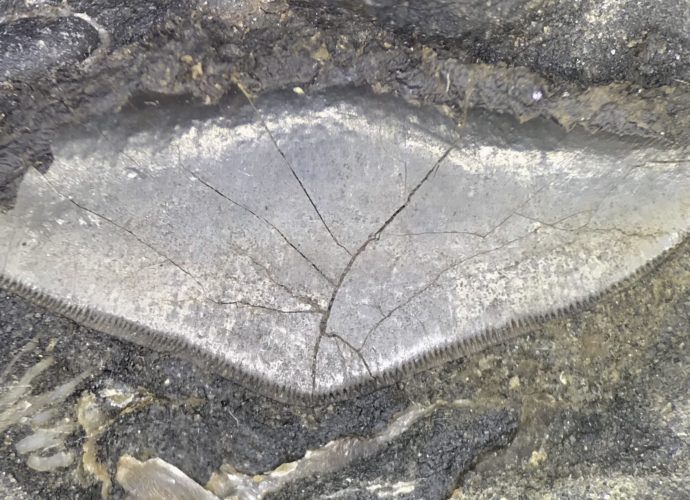Pseudorthoceras and Metacoceras
This combination piece came from hammering on already busted up Limestone. The Pseudorthoceras is long in comparison to most exposed specimens I find. Usually they are buried or the pieces that are exposed fall apart at the septal margins. The Metacoceras in this piece shows excellent septal suture lines andRead More →

